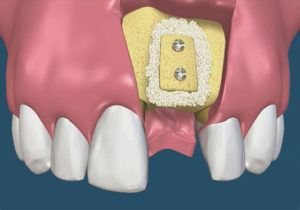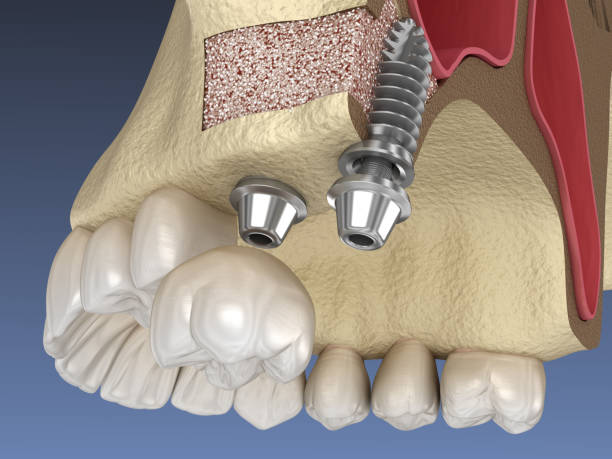The sinuses are a vital yet sometimes disregarded component of our body’s complex architecture. The silent workhorses of our respiratory system silently allow the air to exchange. On the other hand, sinus problems can cause a chorus of pain when they manifest. We will explore the goals and procedures of Sinusitis or sinus surgery in dental, revealing the secrets that lay under the surface.
What is Sinus Surgery?
The purpose of sinus surgery is to treat problems with the nasal sinuses, which are the air-filled spaces behind the eyes, nose, cheeks, and forehead. Reducing symptoms and enhancing sinus function are the main objectives of sinus surgery. In contrast to traditional procedures, endoscopy and other minimally invasive methods are frequently used in sinus surgery in order to reduce trauma and expedite recovery.

When the sinuses are in good working order, they create mucus to capture and remove unwanted objects, aid in humidifying the air we breathe, and enhance voice resonance. However, a number of symptoms may appear when these sinuses become clogged or infected, requiring surgery.
Conditions that may Require Sinus Surgery
Chronic Sinusitis
Despite attempts at medical care, chronic sinusitis is defined as a persistent inflammation of the sinus lining that lasts for at least 12 weeks. In order to address underlying problems that are contributing to the inflammation, sinus surgery may be indicated when conservative therapies such as nasal sprays, antibiotics, and other treatments become ineffective.
Nasal polyps
These growths, which can form in the sinus and nasal passageways, are not malignant. Larger or recurring polyps may require surgical excision in order to restore normal sinus function, whereas smaller polyps may be treated with medication.
Deviated Septum
When the nasal septum, the thin wall separating the nasal passages, moves, it results in a deviated septum. This may block airflow and aggravate sinus problems. This distortion can be corrected by sinus surgery, frequently in combination with septoplasty, to improve breathing and lessen the discomfort associated with the sinuses.
Sinus Cysts
A number of factors can lead to the development of sinus cysts, which are uncomfortable and impede regular sinus outflow. To eliminate these cysts and restore healthy sinus function, surgery could be necessary.
The Purpose of Sinus Surgery for Sinusitis
Creating Enough Space
The maxilla, or upper jaw, is located anatomically near the maxillary sinuses, which are air-filled cavities located behind the cheekbones. When individuals need dental implants in their upper jaw, the sinuses’ close proximity might pose a problem. There may not be enough bone height for a stable implant implantation because the sinus floor is too close to the mouth cavity.
Treating Bone Deficiency
When dealing with insufficient bone in the posterior upper jaw, sinus surgery—especially a treatment called a sinus lift or sinus augmentation—becomes essential. Natural anatomy, bone loss from tooth extractions, or progressive sinus enlargement might all contribute to this insufficiency.

The Sinus Lift Procedure
To create a space beneath the sinus membrane, a trained periodontist or oral surgeon delicately raises the membrane. Bone graft material is then used to fill this space, encouraging the formation of new bone. In addition to providing the required room for dental implants, this increased bone height also improves the durability and lifespan of the implants.
Facilitating Effective Implant Integration
Dental implants function as synthetic tooth roots, firmly securing artificial teeth in position. These implants must blend in perfectly with the surrounding bone for the best possible functioning and aesthetics. By treating bone inadequacies, sinus surgery increases the likelihood of successful integration by ensuring a stable basis for dental implants.
Increasing Treatment Options
For those who were previously thought to be unsuitable for dental implants owing to inadequate bone support, sinus surgery provides new options. This surgical procedure improves both oral function and esthetic results by raising the sinus floor, making implant-supported restorations more accessible to a wider range of individuals.
Setup of Sinus Surgery or Sinusitis
Within the complex field of sinus surgery, the preparatory phase is an essential step that lays the groundwork for an accurate and effective intervention. Providing an intimate look behind the scenes at the surgical process, Dr. Chirag Chamria of Royal Dental Clinics illuminates the painstaking planning and preparation required.
Surgical Team Coordination
A talented surgical team conducts a symphony during sinus surgery; it is not a solitary endeavor. The arrangement entails the coordination of many healthcare specialists, such as nurses, anesthesiologists, and surgeons. Every member is essential in making sure that the surgical setting promotes accuracy and patient safety.
Clear Communication
The foundation of a good surgical setting is effective communication. The team makes sure everyone is in agreement by talking over the surgical strategy, roles, and duties. A climate of collaboration and efficiency in surgery is fostered by clear communication.

Sterile Environment
It’s critical to keep the surgical area sterile. Strict measures are in place to guarantee that all tools, machinery, and the operating room itself follow high standards of hygiene. By adhering to strict sterility protocols, the likelihood of infections and post-operative problems is reduced.
Equipment Check and Calibration
The surgical equipment is carefully inspected and calibrated throughout the setup process. Every piece of gear, from specialist equipment to endoscopes, is tested to guarantee maximum performance. This meticulous attention to detail reduces the possibility of technical issues during surgery, which enhances the procedure’s overall accuracy.
Integration of advanced Technology
Dr. Chamria draws attention to the usage of navigation systems, which improve surgical maneuver precision, as examples of sophisticated technology integrated into the setup. Representing the clinic’s aim to remain at the forefront of surgical quality is its commitment to technological innovation.
Conclusion
As we come to the end of our investigation of the rationale and methodology of sinus surgery, keep in mind that information is your ally. Equipped with knowledge from Royal Dental Clinics‘ Dr. Chirag Chamria, you may approach sinus surgery with assurance, understanding that alleviation and an improved standard of living lie beyond the operating room door. Cheers to unrestricted breathing and a life free from the constant anguish of sinus problems!






